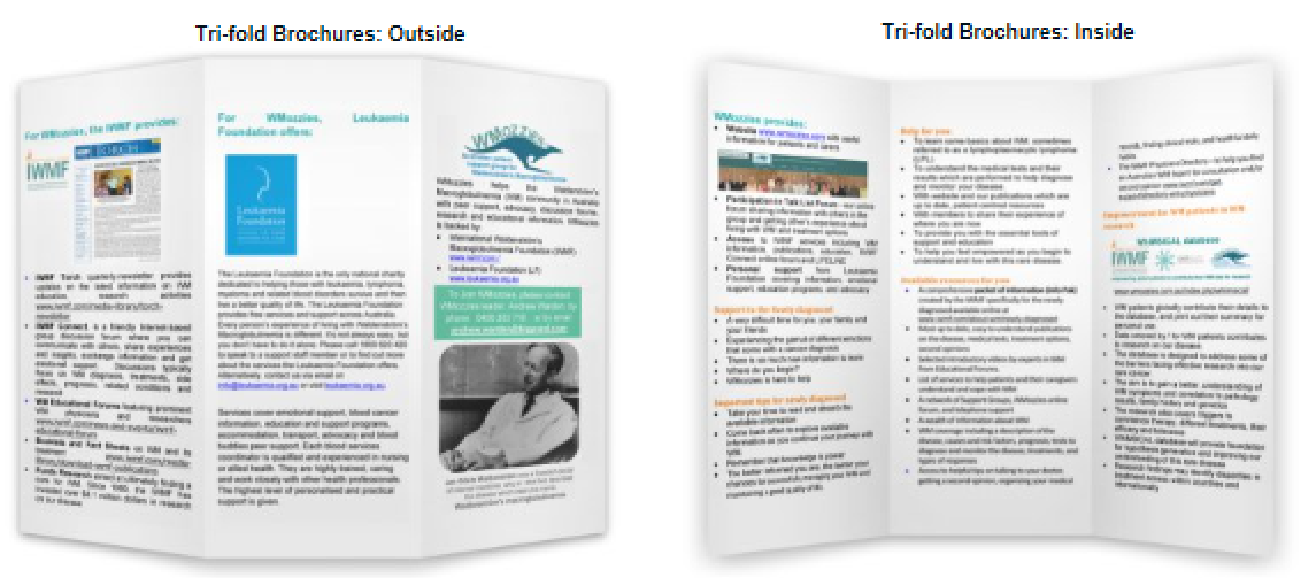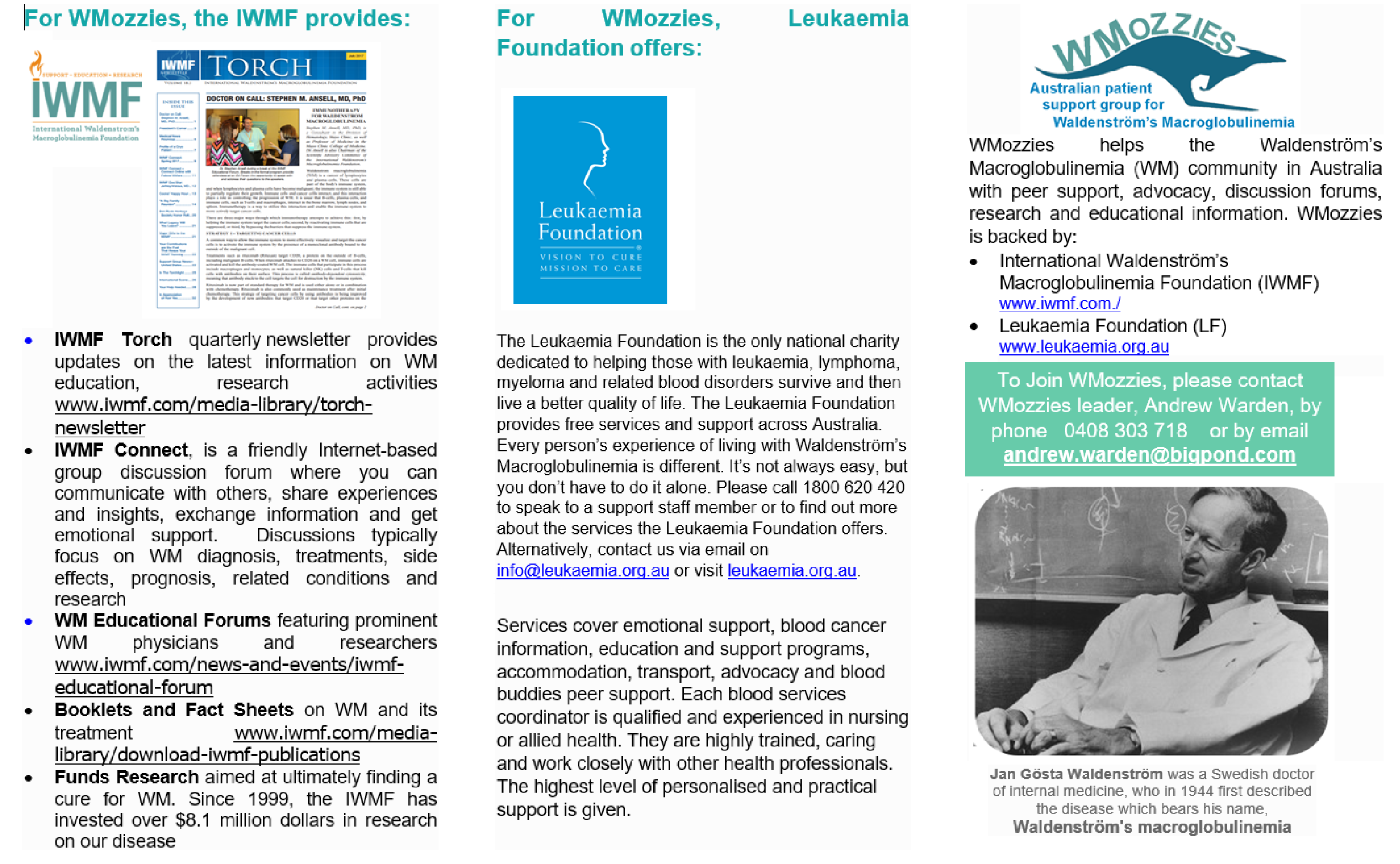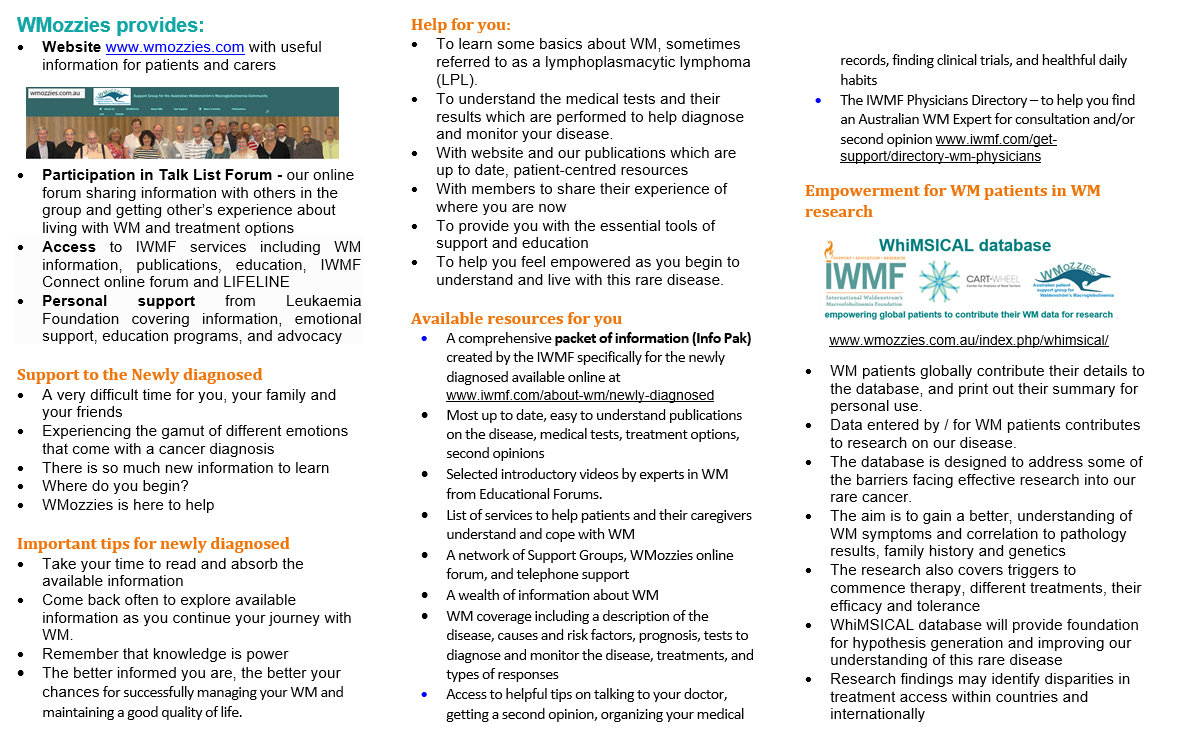The WhiMSICAL Registry’s publication of patient-entered data in the prestigious medical journal, American Journal of Hematology, presents important research for all WM patients.
It has added to the field of WM Research by capturing real world WM treatment and quality of life outcomes. Congratulations to all WM patients who have entered their data into the WhiMSICAL Registry, and now published at
American Journal of Hematology ajh.26173.
More Registry participants are needed to strengthen the results. A further submission is planned to the 2021 American Society of Hematology Conference. This is to include updated details from existing and from new participants received by the deadline of 12
th July.
The WhiMSICAL Registry, built through a patient-clinician investigator partnership, is a global database for WM patients to enter their own data.
Key findings include:
- Longest time to next treatment after 1st line therapy - in patients treated with bendamustine rituximab
- Better quality of life in those on Bruton tyrosine kinase inhibitors compared to recent chemotherapy.
Over 450 patients from 19 countries contributed to this first global registry for WM.
Highlights of the study so far include:
- Little consistency in 1st line therapy choice globally, with 46 different types of therapies given!
- USA patients commence their 1st therapy almost 3 times faster than the rest of the world.
- 1st line bendamustine rituximab has outperformed the Bruton tyrosine kinase inhibitors (BTKi, e.g., ibrutinib, zanubrutinib) and rituximab alone in time to next treatment. The findings are preliminary, however, without exact matching of the groups. More participants, and longer follow-up of existing participants are needed to confirm these exciting preliminary results.
- Patients on BTKi report better quality of life scores than those who recently received other treatments.
COVID-19 vaccines are now rolling out globally. WM patients may achieve impaired vaccine responses due to their condition and treatment. To help assess the impact of COVID on patients with WM, the WhiMSICAL Registry has included a question (at question 19) on COVID-19 testing, infection and vaccination. Please contribute to this important and urgent research question for WM patients.
From anywhere in the world, you can join the WhiMSICAL Registry by registering and completing consent at
www.cart-wheel.org, and then filling out the questionnaire. Some data is always better than no data. Your answers can, and are recommended to be, continually updated. Please note that it does not all need to be done in one sitting; you can enter as much (or as little) as you are able to provide each time to access the Registry. (Naturally, the more data that is collected, the better the outcomes for further research.)
For those already participating in WhiMSICAL, thank you for contributing your patient voice to peer-reviewed research. Please continue to update your data at
www.cart-wheel.org, making sure to complete the newly added COVID-19 questions and update any changes to your treatment (question 9) and quality of life (questions 20 and 21). We need your help to provide “
big data” to increase the power of this research by increasing the number of participants. Together, we can help answer some important questions in WM research as we search for a cure.
For further information on WhiMSICAL Registry, click
here WhiMSICAL Registry and
Frequently Asked Questions or contact
whimsical@iwmf.com.




